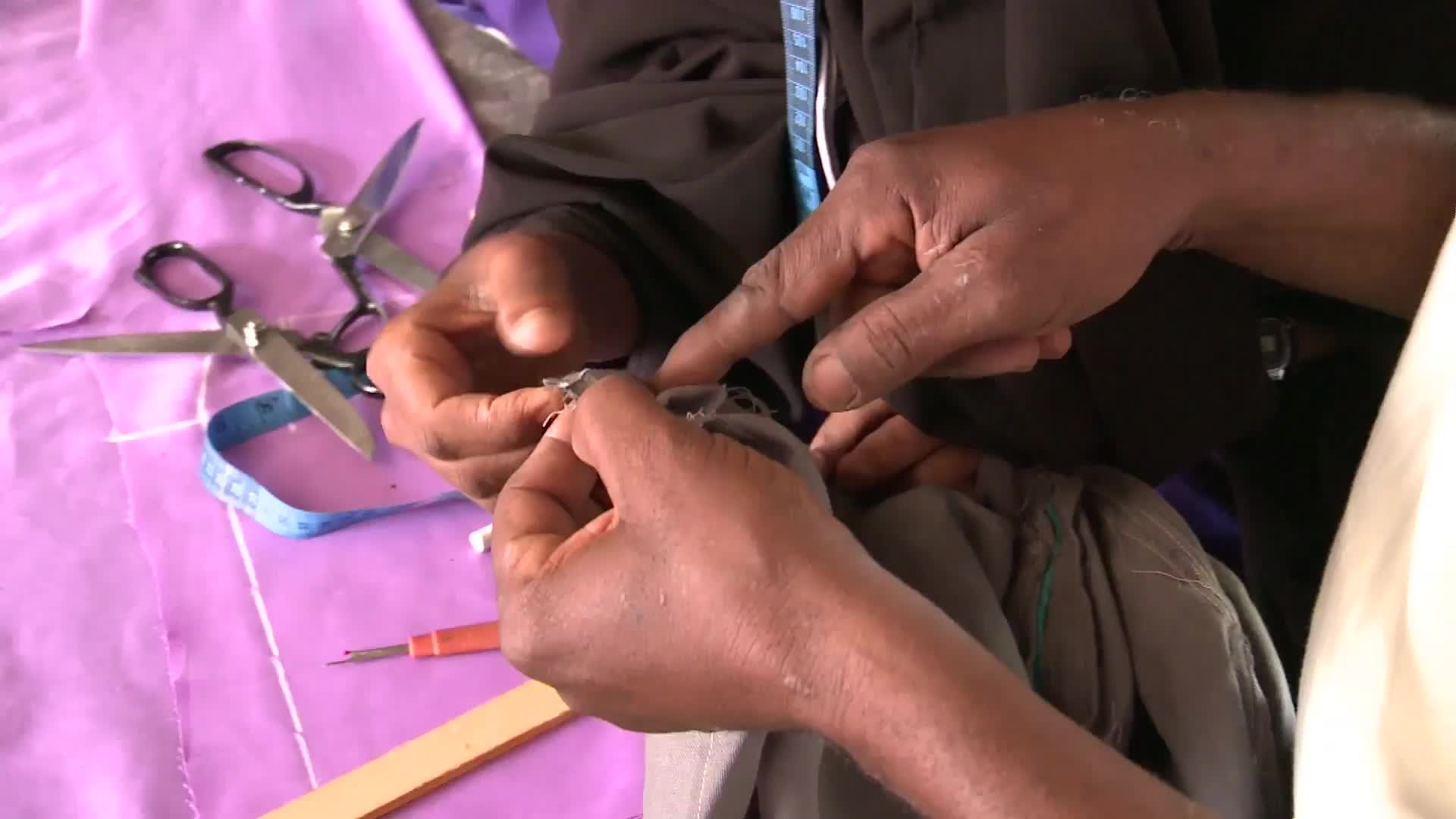Kakuma, Kenya Competencies and livelihood training for refugees and local residents


With its
185,000 dwellers, the Kakuma refugee camp in Kenya is one of the largest
refugee camps in the world. Providing better protection as well as improving
the livelihoods of the displaced population is a focus of the SDC’s work. The
goal is to give the refugees an economic base to give them more independence in
the future.
Aim and Implementation

During
the first phase of the project, 500 jobless young adults received vocational training.
Half of the trainees were women while 250 participants were locals and 250 were
refugees. During the current phase (2016 to 2019), another 2,500 beneficiaries
will be trained to be car mechanics, hairdressers, tailors or computer
technicians. The number of available training courses will be increased from 12
to 21.
Why is Switzerland engaged just here?

The Horn of Africa hosts the most refugees in
Africa.
Many refugees living in Kakuma were born in the camp. Due to national laws and the limited number of resettlement places, it is
pretty unlikely that the refugees will be able to return to their home
countries or legally settle either in their host country, such as Kenya, or in a
third country. Because of the protracted crises in countries such as South
Sudan or Somalia, the number of people looking for protection in the region is increasing.

UNHCR and its partners serve the basic needs of the refugees. They cover essentials like shelter, water, food, health and
primary education. This assistance, however, is only limited and does not completely meet the great needs of the affected population. However, other needs such as
further education and long-term perspectives are beyond reach.
The SDC is trying to bridge
that gap by creating alternatives to provide this lost generation with a brighter future.

Protection of civilians – especially of forcibly
displaced persons – has been a focus of Switzerland’s activities for many
years.
Switzerland can also draw from years of
international experience in promoting competencies and vocational training.
This is why the SDC has combined its competencies
and uses its experiences in providing vocational training to the benefit of the
forcibly displaced population.

People in need should have better access to the
labour market in order to gain more independence. This is a way to reduce
poverty and their dependence on aid.
Experience has shown that
refugees, who have improved their economic perspectives in the camp, are more likely to return to their home countries.

Refugee camps are often set up in the
peripheries of a town, where infrastructure is mostly insufficient and poverty is
high. It frequently happens that the local population is actually worse off
than the refugees, who receive support from the international community.
Involving refugees and the
local population in the same projects promotes mutual understanding as well as
peaceful coexistence; it reduces poverty and increases acceptance for each other.
Future

Vocational training in combination with
reading, writing and arithmetic courses as well as psychosocial support will
also be available in the future. During the current project phase (2016 – 2019),
a market and practice-oriented training concept for informal vocational
training courses is being developed. The concept is due to be implemented in other regions in the future.
Courses
Various vocational training courses were developed
during the pilot phase. The selection was based on a market analysis
identifying existing needs in the region. The project will offer 21 different
courses in the future:
Facts and Figures

In 2013, a new conflict flared up in South
Sudan. Since that time, many people have fled to Kakuma in the district of
Turkana in Northern Kenya.
Most of the 168,000 refugees and asylum-seekers
in Kakuma (as of April 2017) are from South Sudan and Somalia.

During the pilot phase (213 to 2016) 1,089
refugees and locals (802 were women) attended courses in reading, writing, arithmetic,
finances and livelihood competencies as well as psychosocial support.
148 young men and women
took vocational training courses and 219 received entrepreneurship training. Eight working groups formed during the pilot phase were able to conclude small labour
contracts in 2016 and generate income for the individual members and the entire
group.
Partners, donors and budget

Swisscontact has
been mandated with the implementation of the Skills4Life Project.
Swisscontact has a proven track record in implementing
workforce development programmes and is active in 29 countries.

The project is implemented in close coordination and partnership with the UNHCR, representatives of the refugee and host community population the Government of Turkana county, as well as different actors and
organizations actif in the skills development sector in Kakuma. project
implementation is monitored by a steering committee composed by the above
mentioned actors.

The pilot phase of the project started in the
Summer 2013 ended in Summer 2016 and was financed by SDC with CHF 1.2 million. The
second phase started in July 2016. It will run for three years for a total
budget of CHF 3’050’000.
Contacts:
- Swisscontact: Kenia Switzerland
- Swiss Agency for Development and Cooperation: Horn von Afrika
















































































